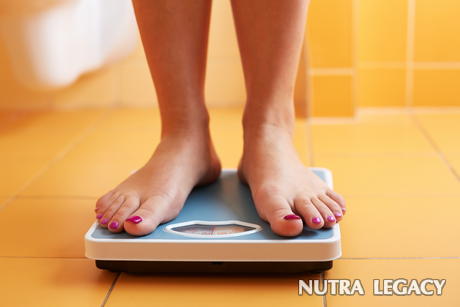Figuring out What You Should Really Weigh
Weight loss seems to have become an actual past time for many of us. Part of our perception may be based on social and marketing pummeling us with images of thin svelte and muscular people, but there are statistics that show most of us are overweight. Sadly, we have been conditioned to only understand weight loss and not to see that weight in the human body is configured in a number of different ways.

One of the first mistakes that we fall prey to in weight loss is relying on the scale. Physicians and insurance companies developed a gauge in the 1950’s to determine whether someone was under or overweight. We have continued to rely on the scale as the measurement to trust. The weight gauge was originally designed for insurance purposes and not to reflect actual health and nutrition. In a nutshell, weight is configured in pounds, whether it’s fat, muscle or lean. The other problem with the scale is that if it shows a loss, it doesn’t have the ability to differentiate between muscle or fat.
Using the BMI (Body Mass Index): The BMI is an overall configuration taking weight, height along with the body fat in configuring your health risk. The BMI can be a good measurement in estimating some health risks, but again, it doesn’t differentiate between muscle, lean or fat. An athlete might be considered fat because of the muscle weight or an older person may show conditions of being underweight due to muscle and bone loss. Body fat analysis is the only true way to know and understand where you stand in the weight situation. Your local fitness center will be the best place to get a body fat analysis. It will only take a few minutes of your time, but it is worth it.
Another area of confusion is what is called our ‘ideal weight’. This is dependent upon so many factors: muscle, fat, bone density, height and genetics. An example might be the 5 ft 5” woman from a family with a history of being robust in size. Ankles, wrists, hands and feet might be thicker (or what we called ‘big boned’), with a thicker waist and rib cage structure. This woman will struggle her whole life to achieve the perfect weight according to the charts.
As we mature, our body also falls into a naturally occurring weight level. This is what many people fight as they go on diets. Our bodies intuitively know what weight we need to be to remain healthy. Many of us fight this battle after we have babies; try as we might, eat healthy and exercise and only a few pounds come off. Admitting the reality that our bodies have changed and toning up, rather than losing weight is the answer to that dilemma. Fat will slowly be replaced with lean muscle and yet our weight (according to that scale) may not have budged. In some cases, replacing fat even with lean muscle will actually look like we have gained weight.
The information supplied in this article is not to be considered as medical advice and is for educational purposes only.
|
| ||||||||||||||





 22 Jul 2013
22 Jul 2013